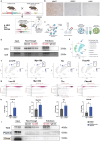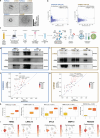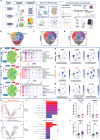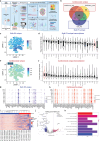This is a preprint.
Cardiomyocyte-derived circulating extracellular vesicles allow a non-invasive liquid biopsy of myocardium in health and disease
- PMID: 39371135
- PMCID: PMC11451713
- DOI: 10.1101/2024.09.19.24314009
Cardiomyocyte-derived circulating extracellular vesicles allow a non-invasive liquid biopsy of myocardium in health and disease
Abstract
The ability to track disease without tissue biopsy in patients is a major goal in biology and medicine. Here, we identify and characterize cardiomyocyte-derived extracellular vesicles in circulation (EVs; "cardiovesicles") through comprehensive studies of induced pluripotent stem cell-derived cardiomyocytes, genetic mouse models, and state-of-the-art mass spectrometry and low-input transcriptomics. These studies identified two markers (POPDC2, CHRNE) enriched on cardiovesicles for biotinylated antibody-based immunocapture. Captured cardiovesicles were enriched in canonical cardiomyocyte transcripts/pathways with distinct profiles based on human disease type (heart failure, myocardial infarction). In paired myocardial tissue-plasma from patients, highly expressed genes in cardiovesicles were largely cardiac-enriched (vs. "bulk" EVs, which were more organ non-specific) with high expression in myocardial tissue by single nuclear RNA-seq, largely in cardiomyocytes. These results demonstrate the first "liquid" biopsy discovery platform to interrogate cardiomyocyte states noninvasively in model systems and in human disease, allowing non-invasive characterization of cardiomyocyte biology for discovery and therapeutic applications.
Figures






References
-
- Royer P. et al. Plasma proteomics for prediction of subclinical coronary artery calcifications in primary prevention. Am. Heart J. 271, 55–67 (2024). - PubMed
Publication types
Grants and funding
LinkOut - more resources
Full Text Sources
